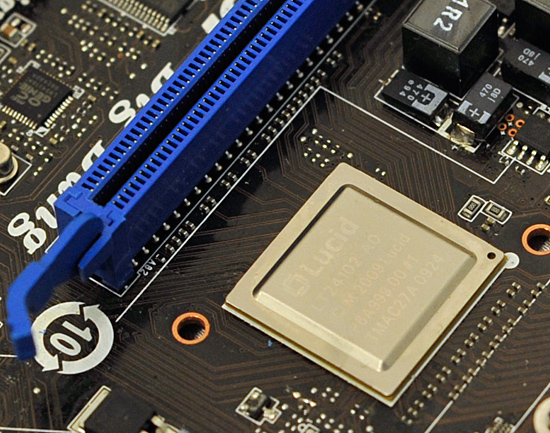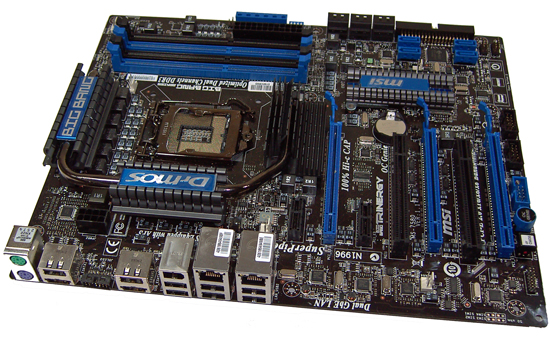Last year Lucidlogix came to us with a rather amazing claim: we can do multi-GPU better than the guys who make the video cards in the first place. Through their Hydra technology, Lucid could intercept OpenGL and DirectX API calls, redistribute objects to multiple video cards, and then combine the results into a single video frame. This could be done with dissimilar cards from the same company, even different companies altogether. It would be multi-GPU rendering, but not as you currently know it.

That was in August of 2008, when the company was first showcasing its technologies in hopes of finding a suitor. In 2009 they found that suitor in MSI, who are anchoring their new high-end Big Bang line of motherboards with the Hydra. After some bumps along the way, Lucid and MSI are finally ready to launch the first Hydra-equipped board: The Big Bang Fuzion.
We’ve had the Fuzion in our hands for over a month now, as the hardware has been ready well ahead of the software. Lucid has been continuing to develop the software side, and the two parties are finally ready to sign off on the finished product, although Hydra is still very much a work in progress.

The Big Bang Trinergy, the Fuzion's identical twin
As we’re currently in Las Vegas for CES (where MSI is launching the Fuzion), today we’ll be taking a quick look at the performance and compatibility of the Hydra, to answer the most burning of questions about the technology. Once we’re back from CES, we will be following that up with an in-depth look at image quality, edge cases, and other deeper issues. We’ve only had the newest drivers for a few days now, so we haven’t had a chance to give it a complete workover.
Finally, this is just a look at the Hydra technology itself. We’ll have a separate review of the Fuzion board as a motherboard at a later time. However it’s virtually identical to MSI’s other Big Bang board, the NVIDIA NF200-equipped Trinergy. The only significant difference between the boards is that the Fuzion has the Hydra chip, while the Trinergy has the NF200.
With that out of the way, let’s get started.










47 Comments
View All Comments
ExarKun333 - Thursday, January 7, 2010 - link
Performance seems a little weak; hopefully driver fixes will increase trhe scaling. If it can't meet SLI/CF specs, it probably won't survive. Less scaling in "X" mode is acceptable, but you would still hope for decent performance gains with mis-matched cards.Zstream - Thursday, January 7, 2010 - link
Please!!!!!!!!!!!!!!!!!!!!!!!!!!!!!!!!!!!!!!!!!!I could care least if CF/SLI achieves 100FPS average when it dips down to 15FPS.
Mr Perfect - Thursday, January 7, 2010 - link
He's absolutely right.When buying a video card I'm not worried about the highest frame rate peak, or even the average framerate, I'm trying to avoid the dreaded minimum FPS slideshow. If a card spends half of it's time doing 100FPS, and the other half at 15FPS, I'd rather buy the card the does a steady 50FPS.
StraightPipe - Thursday, January 7, 2010 - link
The article clearly stated that FRAPS doesnt work, and they are just grabbing FPS off the screen. Not very accurate or reliable, but it's better than nothing.Here's to hoping that we'll get some more detail about MIN FPS in Part2.
jnmfox - Thursday, January 7, 2010 - link
QFTGeorgeH - Thursday, January 7, 2010 - link
I agree, the minimum frame rate is very important here, especially in X mode. I understand it might not be possible without better support for games and benchmarking tools, but if you can find a way please do so.AmbroseAthan - Thursday, January 7, 2010 - link
Do the Hydra drivers allow for Folding@Home to be run, or is it another sacrifice for using Hydra?I have hopes Lucid can get Hydra up and running pretty solidly, as the concept is wonderful. But it does seem multiple reviews right now are finding a lot of issues with the drivers.